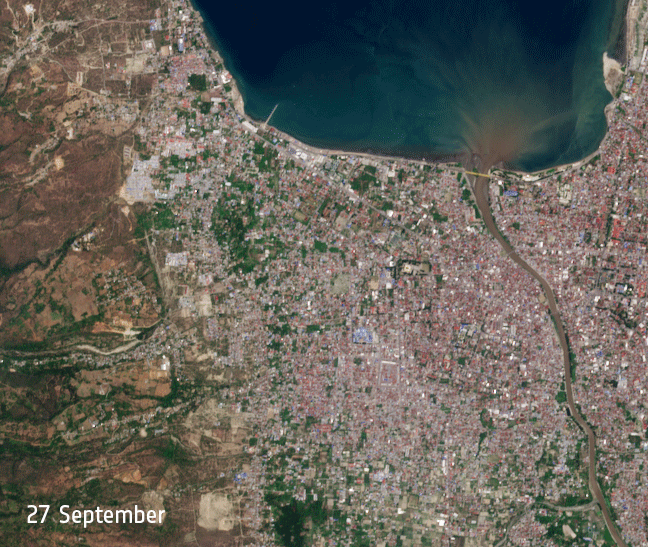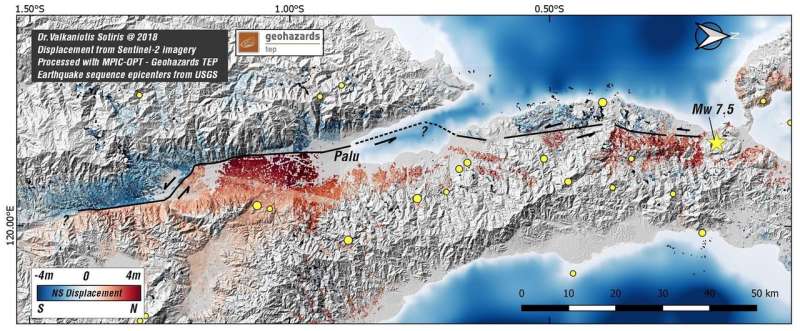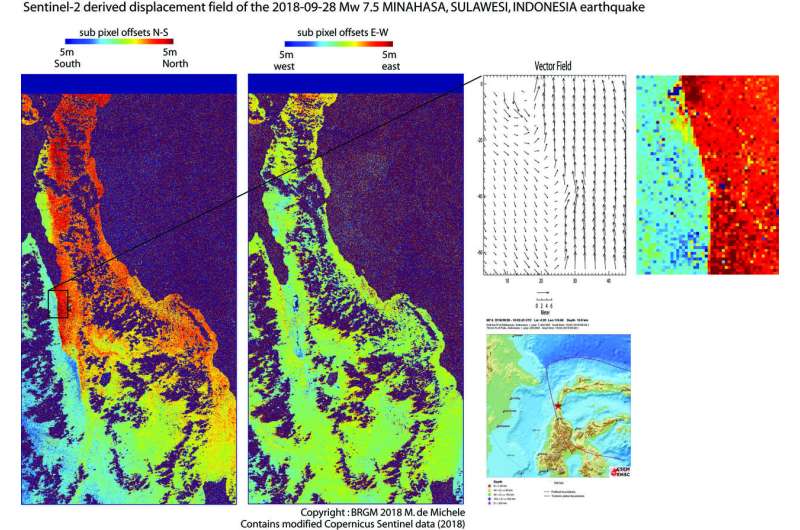Sentinel-2 maps Indonesia earthquake

A 7.5-magnitude earthquake and tsunami hit Indonesia on 28 September, destroying homes and hundreds of lives. As the death toll continues to rise, the effects of this natural disaster are far-reaching, with hundreds of thousands of people seeking access food, water and shelter in the aftermath of this tragedy.
Satellite data can be used to support international disaster risk management efforts, such as those in Indonesia. One of the ways in which ESA is contributing to this area is through leading a range of activities in the framework of the Committee on Earth Observation Satellites (CEOS) Working Group on Disasters.
In particular, the Geohazards Office, led by the French Geological Survey (BRGM) liaises with practitioners on the exploitation of Earth observation processing services to support hazard mapping and risk assessment. This is in the spirit of the International Forum on Satellite Earth Observation and Geohazards.
BRGM experts have generated displacement maps using Copernicus Sentinel-2 acquisitions from 17 September and 2 October.
Thematic experts from the Corinth Rift Laboratory in Greece have generated similar results using the Cloud processing platform GEP, which has been designed to rapidly provide automated measurements.
As shown in the images, the earthquake triggered deformations of several metres and a tsunami. Around 1400 people are reported to have lost their lives, hundreds have been hospitalized and many more thousands are thought to have been displaced. It has been estimated that up to 1.5 million people will be affected by these events.

The vice president of the country, Jusuf Kalla, has said that the final death toll could reach the thousands. The International Charter Space and Major Disasters was triggered by the Asian Disaster Reduction Centre on 29 September for this event. International collaboration is in place to organise Earth observation-based disaster response activities.
Scientific products such as the map created by BRGM are helping us to better understand hazards. Beyond this example it is foreseen that Earth observation data will also be useful for supporting recovery, rehabilitation and reconstruction activities in Indonesia.

Provided by European Space Agency





















